Green or Red Apples: Which Crunch Is for You?
Green vs. Red Apples often sparks lively debate among fruit enthusiasts everywhere.
Colorful fruits share many nutritional benefits while presenting distinct flavor profiles that appeal to different taste preferences.
Most green varieties like Granny Smith offer a tart, acidic bite that many cooking experts prize for baking perfect pies.
Red types such as Honeycrisp or Gala typically provide a sweeter experience with varying levels of crispness.
The choice between them might reveal something about our personality traits - tart-lovers tend to embrace bold experiences while sweet-seekers often enjoy life's simple pleasures.
Some people remain fiercely loyal to one color throughout their lives.
Others switch preferences depending on mood, season, or specific culinary needs.
This age-old apple rivalry continues to divide households and friendships in the most delicious way possible.
Facts About Apples
Apples are one of the most popular and widely consumed fruits globally, cherished for their sweet to tart flavor and crunchy texture.
They belong to the Malus domestica species and grow on apple trees, which are cultivated in many regions with temperate climates.
There are over 7,500 known varieties of apples, each differing in taste, color, size, and texture, from sweet Fuji apples to tart Granny Smiths.
Apples have a long history dating back thousands of years, with origins tracing back to Central Asia.
Over time, apple cultivation spread across Europe and the Americas, becoming an integral part of many cuisines and cultures.
Apples can be eaten fresh, baked, juiced, or incorporated into countless recipes including pies, sauces, and salads.
Green Apples
Green apples come in just a few varieties, with Granny Smith standing out as the most common one. Other types like Shizuka, Pippin, and Crispin can sometimes be found at markets too.
Despite having fewer options compared to red apples and a taste that some find less sweet, green apples pack a serious nutritional punch.
Red Apples
From sweet Fuji to classic Red Delicious, red apples offer many delicious options for everyone to enjoy. These juicy fruits tend to have a higher sugar content than their green counterparts, making them a favorite snack among children despite being slightly less nutritious.
Most of the sweetest apple varieties come in beautiful red hues, which is why they're commonly used to make apple vinegar - their natural sugars create a better fermentation process. Several tasty red varieties like Gala, Rome, and Cameo can be found in grocery stores throughout the year.
Green vs Red Apples: The Complete Comparison
Green and red apples may look similar, but they offer different tastes and health benefits worth knowing about. Knowing these small differences can help you select exactly what your taste buds or recipe needs.
Here is a comparison table of green and red apples.
| Feature | Green Apples | Red Apples |
| Appearance - Color | Bright green skin, varying from greener to yellowish-green shades. | More varied colors: bright red, dark red, crimson, or red-yellow combinations. |
| Appearance - Shape | Mostly round or round-conical. | More diverse shapes: round, round-conical, tall conical, sometimes slightly angular. |
| Color Determinants | Mainly chlorophyll pigment, some carotenoids; chlorophyll remains at maturity, giving green color. | Produce anthocyanins when ripe, combining with chlorophyll and carotenoids; amount of anthocyanin determines shade of red. |
| Taste | More tart and sour, lower sugar content. | Sweeter due to higher sugar content; generally preferred for sweetness. |
| Skin Thickness | Thicker skin, giving a crispier bite. | Thinner skin, allowing you to taste the pulp more distinctly. |
| Juiciness | Less juicy than red apples. | Higher juice content; some varieties release juice readily when bitten. |
| Nutritional Facts | Slightly lower sugar, higher fiber; good for diabetics and weight management. | Similar nutrients overall but higher in sugar and antioxidants, good for disease prevention. |
| Health Benefits | Ideal for diabetes, heart health, and weight control due to low sugar and high fiber. | Richer in antioxidants that protect against cancer and support brain health. |
| Common Uses | Best eaten raw in salads, juices, smoothies to preserve nutrients and crispness. | Favored for apple cider, jams, sauces, baking, and fresh eating due to sweetness and fermentability. |
Appearance
Green apples have a bright green skin that can sometimes lean toward a yellowish-green hue, but they generally maintain a vibrant green look. In contrast, red apples display a wide range of colors, from bright red to dark crimson, and can also have mixed red and yellow tones, making their appearance more varied and colorful than green apples.
Green apples typically have a consistent round or round-conical shape, which makes them easy to recognize. Red apples, however, come in more diverse shapes, including round, round-conical, tall conical, and even slightly angular forms, adding to their visual variety compared to green apples.
Factors that Decide The Color Of Apples
The color of apple skin is determined by pigments like chlorophyll, carotenoids, and anthocyanins, as well as the fruit’s ripeness. Green apples contain mostly chlorophyll, which remains even at maturity, giving them their characteristic green color.
Red apples begin producing anthocyanins as they ripen, which combines with other pigments to create their red hues. The intensity of the red color depends on the amount of anthocyanins present.
Taste
Red apples tend to be sweeter because they have higher sugar content, making them more appealing to those with a sweet tooth.
Green apples, on the other hand, usually taste more tart and sour due to their lower sugar levels, which can be refreshing for those who prefer less sweetness in their fruit.
Skin Thickness
Green apples have thicker skins, which give them a crisper and firmer bite. Red apples generally have thinner skins, allowing you to taste the juicy pulp more easily and enjoy a smoother texture when eating.
Juiciness
Red apples are typically juicier than green apples. Many red apple varieties release noticeable juice when bitten into, adding a satisfying, refreshing burst, while green apples tend to be less juicy in comparison.
Nutrition Facts
Nutritionally, green and red apples are similar overall, but green apples have slightly lower sugar and higher fiber, which can be beneficial for those managing blood sugar levels. Red apples, meanwhile, contain more antioxidants, contributing to their health benefits.
This table will show you typical nutrient contents in medium-sized red and green apples.
| Nutrient | Red Apple (per 182g) | Green Apple (per 182g) |
| Calories | 95 | 80 |
| Carbohydrates | 25 g | 22 g |
| Sugars | 19 g | 17 g |
| Dietary Fiber | 4 g | 4 g |
| Protein | 0.5 g | 0.4 g |
| Fat | 0.3 g | 0.2 g |
| Vitamin C | 8% of Daily Value | 10% of Daily Value |
| Potassium | 195 mg | 195 mg |
Health Benefits
Green apples are an excellent choice for people with diabetes or those aiming for weight control because of their lower sugar and higher fiber content. Red apples offer greater antioxidant protection, which helps fight free radicals, reduces cancer risk, and supports brain health.
Usage
Green apples are often preferred raw in salads, juices, and smoothies where their crisp texture and fresh flavor shine. Red apples, with their sweeter taste and higher sugar content, are ideal for making cider, jams, sauces, and baking, lending natural sweetness and moisture to recipes.
Swapping Red for Green: Is It Possible?
Swapping red apples for green apples is possible in many recipes, but it can affect the flavor and texture of the dish. Green apples are typically more tart and firm, while red apples are sweeter and juicier.
If you replace red apples with green ones, expect a tangier taste and a crisper bite. This swap works well in salads, some baking recipes, and sauces where a tart flavor is desired.
However, for dishes that rely on the sweetness and juiciness of red apples, like cider or sweet desserts, using green apples might result in a less sweet and less moist outcome.
Adjusting sugar or liquid content can help balance the difference when swapping.
How to Pick Fresh Apples
Many people feel disappointed after buying apples that don't meet their expectations. Seasonal apples are generally fresher, so knowing when certain varieties are harvested helps make better choices.
The skin color gives away important clues about freshness, so take time to examine it closely for each variety. Good apples should have smooth skin without any bruises or blemishes that might indicate damage.
When you hold an apple, it should feel firm and somewhat heavy in your hand – these qualities signal freshness. The purpose matters too; some apples work better for eating raw while others shine in baking or cooking dishes.
During selection, handle them gently to prevent bruising that can happen when apples knock against each other.
What Are Common Dishes to Make with Apples?
Got Questions? We’ve Got Solutions
1. Which type of apple is typically sweeter?
Red apples are generally sweeter with a mild flavor, while green apples (like Granny Smith) offer a tart, tangy taste that some people prefer for their refreshing quality.
2. Are green or red apples better for baking?
Green apples are often preferred for baking pies and desserts because their firmness holds up well during cooking and their tartness balances the added sugar.
3. Do red and green apples have different nutritional benefits?
Both colors provide similar core nutrients, but red apples contain more anthocyanins (antioxidants), while green apples typically have slightly more fiber and less sugar.
4. Which apple has a longer shelf life?
Green apples generally stay fresh longer than red varieties, making them better for storing. Red apples tend to soften more quickly, so they're best enjoyed soon after purchase.

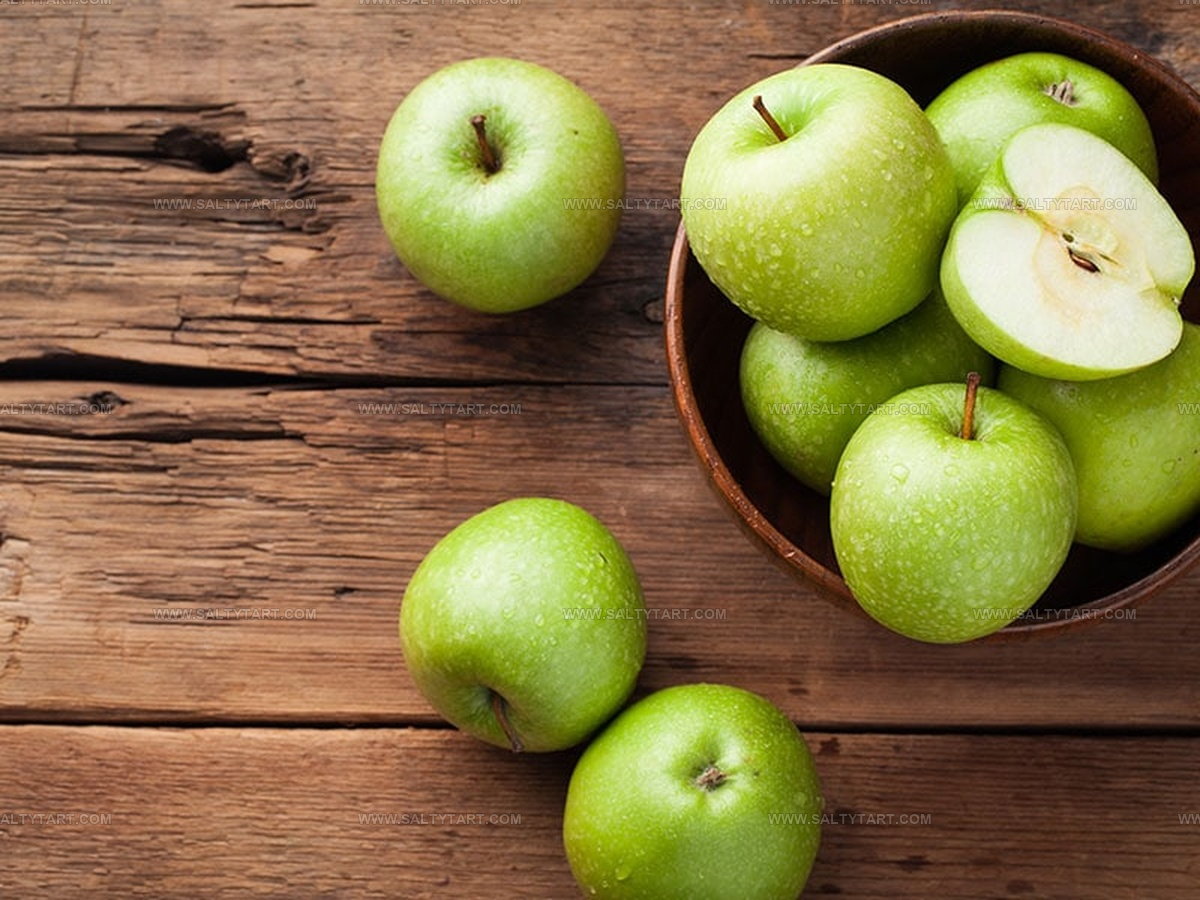

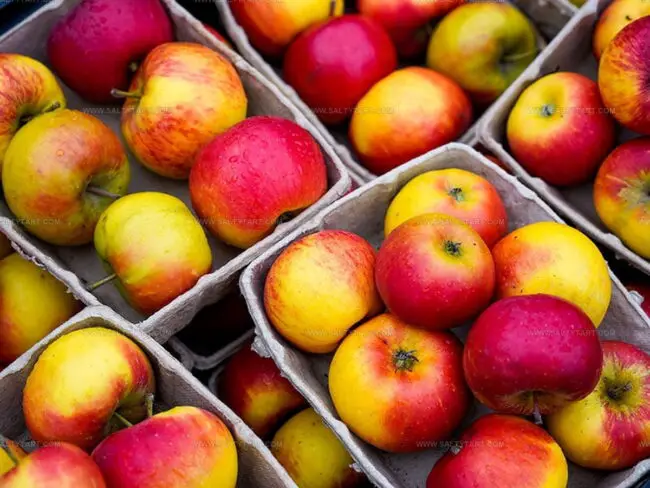
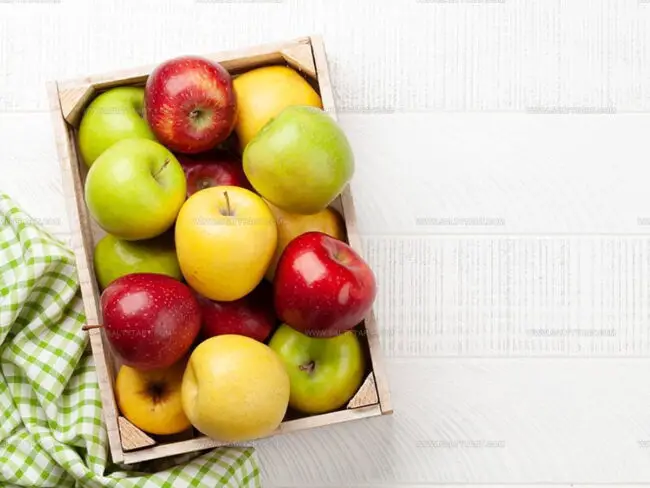
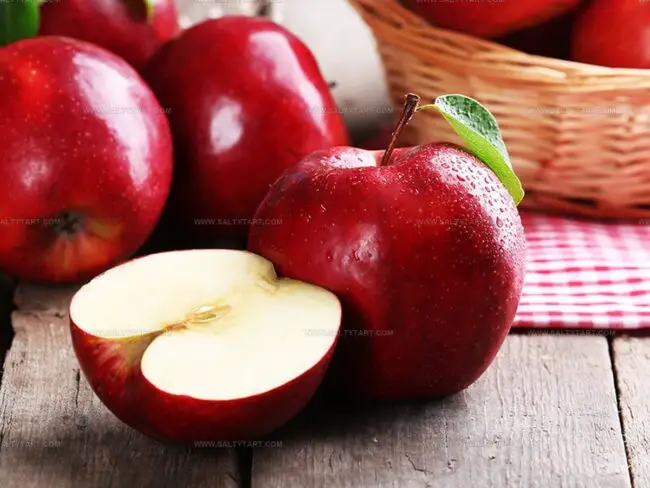
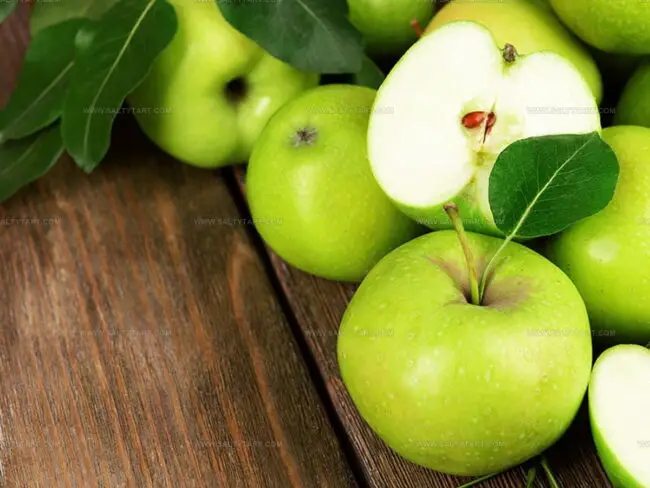

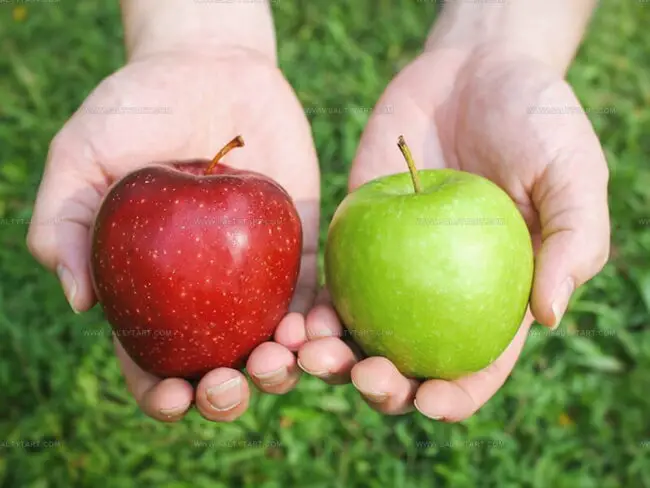
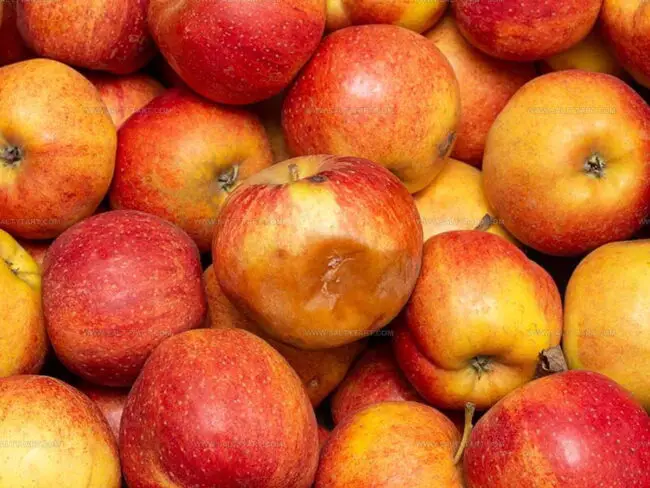
Mike Reynolds
Founder & Recipe Developer
Expertise
Farm-to-table cuisine, Seasonal recipe development, Sustainable cooking techniques, Food photography
Education
Asheville-Buncombe Technical Community College (A-B Tech)
Associate Degree in Culinary Arts
Mike studied culinary arts with a strong focus on farm-to-table principles and sustainable cooking. His training emphasized the importance of fresh, local ingredients and environmentally responsible practices in the kitchen.
Mike’s food journey began deep in the Blue Ridge Mountains, where weekends at farmers’ markets and home-cooked meals sparked a lifelong obsession with simple, seasonal eating.
After earning his Associate Degree in Culinary Arts from Asheville-Buncombe Technical Community College, he set out to bring farm-to-table cooking into everyday kitchens, without the fuss.
Mike’s philosophy is all about keeping it fresh, unfussy, and full of heart. When he’s not crafting new single-serving recipes, he’s hiking mountain trails, chatting with local farmers, or experimenting with wild ingredients in his backyard kitchen.